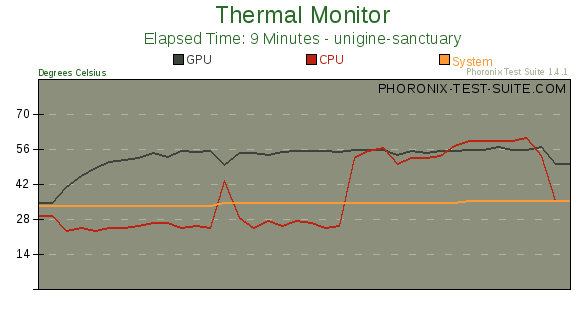Sapphire Radeon HD 4830 512MB
System Setup:
Our graphics card test system consists of an Intel Core 2 Duo E8400 processor running at 4.00GHz, an ASUS P5E64 WS Professional (Intel X48), 2GB of OCZ DDR3-1333MHz memory, Western Digital 160GB Serial ATA 2.0 hard drive, and an OCZ EliteXStream 800W power supply. On the software side we were using Ubuntu 8.10 with the Linux 2.6.27 kernel, X Server 1.5.2, and the Catalyst driver it ships with by default. We had compared the performance of the Radeon HD 4830 512MB to the Sapphire Radeon HD 4670 512MB and Radeon HD 4850 512MB.
Using OverDrive For Linux we had overclocked this Sapphire graphics card. From the stock 575MHz core and 900MHz memory we had pushed the Radeon HD 4830 to 610MHz and 1100MHz, respectively. We had reached an overclock of 620/1150MHz, but at these frequencies we would experience some rendering artifacts in a few of the tests but the system was otherwise stable. With the 610/1100MHz frequencies the system had run fine and experienced no thermal problems. Below is a graph generated by the Phoronix Test Suite showing the GPU temperature as the system was running the Unigine Sanctuary test at its stock frequencies. As you are able to see, even with this very demanding OpenGL benchmark the temperature never reached above 56°C. The heatsink fan had remained quiet throughout operation.

For testing we had used version 1.4.1 (with git patches as of November 10) of Phoronix Test Suite "Orkdal" for benchmarking this graphics card. The test profiles consisted of Nexuiz, Warsow, Doom 3, Quake 4, Enemy Territory: Quake Wars, Unigine Sanctuary, and GtkPerf.
